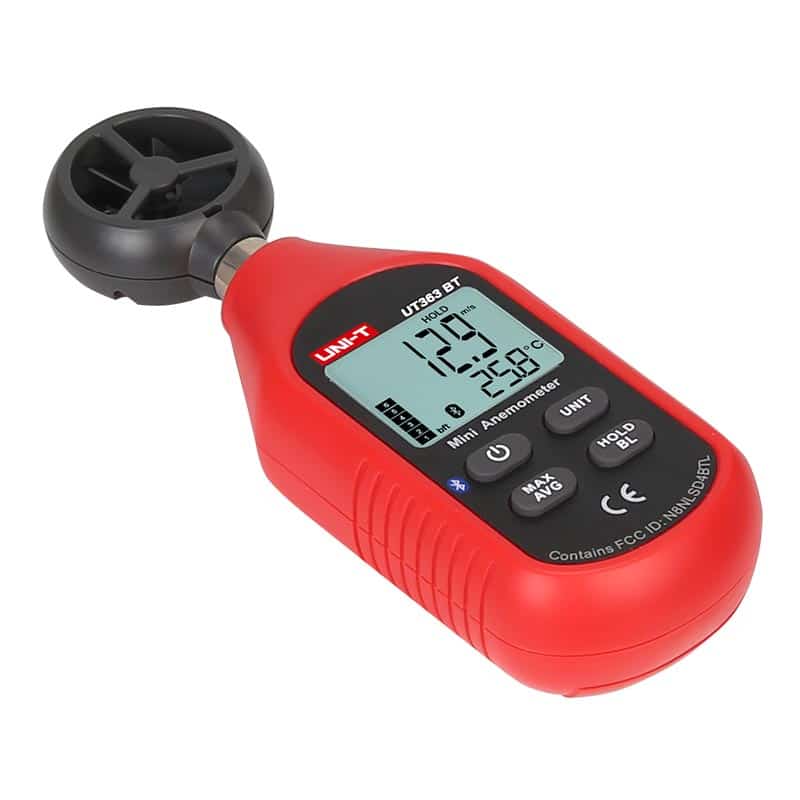Picking the Right Anemometer: A Comprehensive Acquiring Guide
Picking the Right Anemometer: A Comprehensive Acquiring Guide
Blog Article
Checking Out the Features and Advantages of Anemometers for Weather Condition Enthusiasts and Professionals
Anemometers stand as instrumental tools in the realm of climate surveillance, accommodating both lovers and seasoned professionals alike. These devices provide a home window right into the dynamic world of wind patterns and rates, supplying vital information for meteorological analysis and forecasting. From mug anemometers to sonic anemometers, each type brings its unique set of applications and benefits, clarifying various elements of atmospheric problems. As we delve right into the features and advantages of anemometers, a deeper understanding emerges not just of prevailing weather condition phenomena yet likewise of the wider implications for industries like wind power manufacturing and ecological research study.
Importance of Anemometers in Weather Surveillance
Anemometers play an important function in climate tracking by providing accurate dimensions of wind speed, assisting in projecting and understanding weather patterns. These tools, ranging from standard cup anemometers to modern ultrasonic anemometers, are vital for meteorologists, scientists, and weather condition enthusiasts alike.

Types of Anemometers and Their Applications
The most typical types of anemometers include cup anemometers, vane anemometers, hot-wire anemometers, and ultrasonic anemometers. Mug anemometers consist of three or four mugs mounted on horizontal arms that rotate with the wind, measuring its rate. Vane anemometers, on the other hand, use a freely rotating vane to line up with the wind instructions, providing both wind rate and direction measurements.
Each kind of anemometer has its one-of-a-kind advantages and applications. Cup anemometers are appropriate and robust for general weather condition tracking, while vane anemometers are favored for directional measurements. Hot-wire anemometers are delicate to low air velocities, making them suitable for interior atmospheres. Ultrasonic anemometers are non-intrusive and provide high accuracy, commonly made use of in research study and specialized weather condition surveillance applications. Understanding the features and applications of each kind of anemometer is essential for selecting one of the most suitable instrument for particular climate monitoring requirements.
Advantages of Utilizing Anemometers in Projecting
In weather forecasting, the use of anemometers provides invaluable benefits for improving the precision of climate projecting. Anemometers measure wind speed and instructions, offering crucial information for anticipating weather condition patterns. By incorporating wind data right into projecting models, meteorologists can better recognize the motion of weather systems, prepare for changes in weather, and issue extra accurate projections.
Moreover, anemometers play a vital webpage role in analyzing prospective climate risks. Keeping track of wind rates helps forecasters forecast serious weather occasions such as storms, hurricanes, and wintertime storms with greater precision. This very early caution system makes it possible for authorities to release prompt alerts and implement needed precaution, reducing the risks to life and residential or commercial property.
In addition, anemometers help in maximizing renewable resource production. By examining wind patterns, meteorologists can recognize suitable locations for wind farms and forecast power output, contributing to the efficient generation of wind power.

Anemometers in Wind Energy Production
Provided the important function anemometers play in giving accurate wind data for weather forecasting and threat analysis, their relevance expands to the world of wind power manufacturing. Anemometers are crucial instruments in the area of wind energy, where the dimension of wind speed and instructions is essential for establishing the expediency and performance of wind generator installments. By accurately gauging wind speeds at varying heights, anemometers assist maximize the placement see it here and design of wind turbines to make best use of power outcome.
In wind farms, anemometers are strategically positioned to gather real-time wind information that is used to assess the prospective energy manufacturing of a website. This data contributes in figuring out the financial feasibility of wind power projects and in forecasting power generation to guarantee grid stability. In addition, anemometers aid in keeping track of wind conditions to enhance generator efficiency, avoid damage from high winds, and ensure the safety of employees operating in the location of wind turbines.
Enhancing Weather Condition Comprehending With Anemometers

Anemometers play a key duty in enhancing our understanding of microclimates. These localized weather can vary dramatically from wider regional projections, making it necessary to have accurate data for details areas. anemometer. By strategically placing anemometers in numerous places, scientists can collect comprehensive details on how wind acts in different terrains, urban atmospheres, or bodies of water
In addition, anemometers add to enhancing weather condition forecasting models by offering real-time data on wind habits. This info is particularly beneficial for predicting serious weather events, maximizing farming practices, and supporting markets like air travel and maritime navigating. In general, anemometers are invaluable tools that enable us to delve deeper into the complexities of weather systems, inevitably leading to more better-informed choices and exact predictions.
Final Thought
In verdict, anemometers play a critical role in weather monitoring and projecting by gauging wind speed and instructions. They are important tools used by weather condition lovers and experts to gather precise information for predicting weather condition patterns and assessing possible impacts. Anemometers additionally have applications in wind energy production, additional highlighting their importance in both weather forecasting and renewable resource fields. Generally, anemometers add to boosting our understanding of weather condition sensations and improving forecasting capacities. anemometer.
From mug anemometers to sonic anemometers, each type brings its distinct collection of applications and benefits, dropping light Homepage on different aspects of atmospheric problems. These instruments, ranging from conventional mug anemometers to modern-day ultrasonic anemometers, are crucial for meteorologists, scientists, and climate lovers alike. The most common types of anemometers include cup anemometers, vane anemometers, hot-wire anemometers, and ultrasonic anemometers. Cup anemometers are durable and suitable for general weather condition tracking, while vane anemometers are preferred for directional dimensions. Anemometers are essential instruments in the field of wind power, where the dimension of wind rate and instructions is crucial for figuring out the usefulness and effectiveness of wind turbine setups.
Report this page